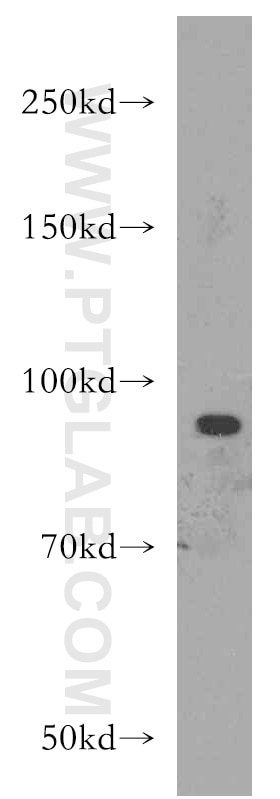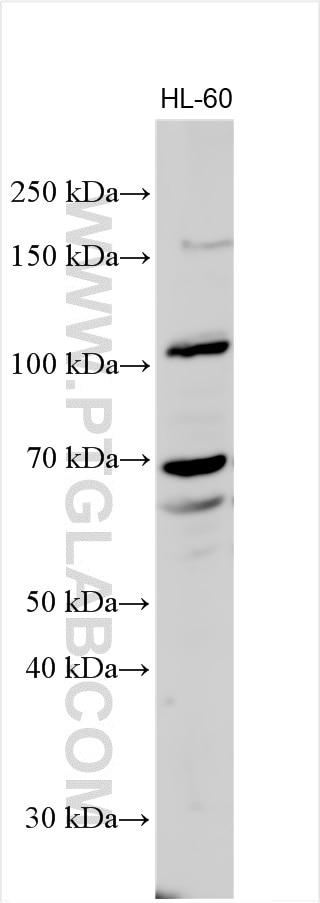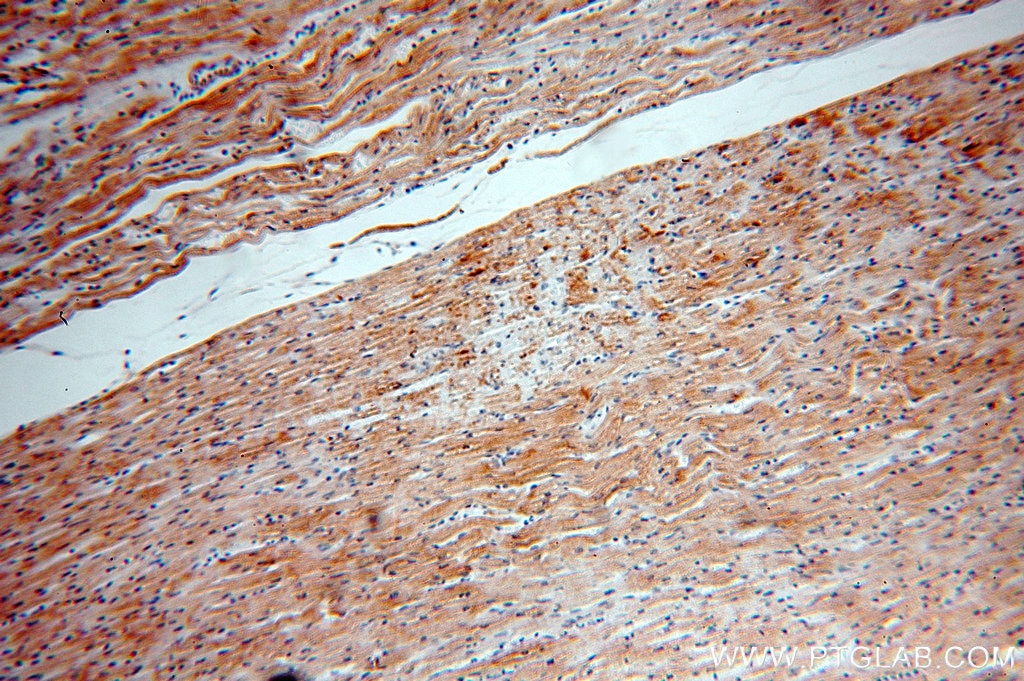- Phare
- Validé par KD/KO
Anticorps Polyclonal de lapin anti-XPR1
XPR1 Polyclonal Antibody for WB, IHC, ELISA
Hôte / Isotype
Lapin / IgG
Réactivité testée
Humain, rat, souris
Applications
WB, IHC, ELISA
Conjugaison
Non conjugué
N° de cat : 14174-1-AP
Synonymes
Galerie de données de validation
Applications testées
| Résultats positifs en WB | cellules Jurkat |
| Résultats positifs en IHC | tissu cardiaque humain il est suggéré de démasquer l'antigène avec un tampon de TE buffer pH 9.0; (*) À défaut, 'le démasquage de l'antigène peut être 'effectué avec un tampon citrate pH 6,0. |
Dilution recommandée
| Application | Dilution |
|---|---|
| Western Blot (WB) | WB : 1:500-1:2000 |
| Immunohistochimie (IHC) | IHC : 1:20-1:200 |
| It is recommended that this reagent should be titrated in each testing system to obtain optimal results. | |
| Sample-dependent, check data in validation data gallery | |
Applications publiées
| KD/KO | See 2 publications below |
| WB | See 5 publications below |
| IHC | See 1 publications below |
Informations sur le produit
14174-1-AP cible XPR1 dans les applications de WB, IHC, ELISA et montre une réactivité avec des échantillons Humain, rat, souris
| Réactivité | Humain, rat, souris |
| Réactivité citée | rat, Humain, souris |
| Hôte / Isotype | Lapin / IgG |
| Clonalité | Polyclonal |
| Type | Anticorps |
| Immunogène | XPR1 Protéine recombinante Ag5373 |
| Nom complet | xenotropic and polytropic retrovirus receptor |
| Masse moléculaire calculée | 696 aa, 82 kDa |
| Poids moléculaire observé | 82-84 kDa |
| Numéro d’acquisition GenBank | BC041142 |
| Symbole du gène | XPR1 |
| Identification du gène (NCBI) | 9213 |
| Conjugaison | Non conjugué |
| Forme | Liquide |
| Méthode de purification | Purification par affinité contre l'antigène |
| Tampon de stockage | PBS avec azoture de sodium à 0,02 % et glycérol à 50 % pH 7,3 |
| Conditions de stockage | Stocker à -20°C. Stable pendant un an après l'expédition. L'aliquotage n'est pas nécessaire pour le stockage à -20oC Les 20ul contiennent 0,1% de BSA. |
Informations générales
XPR1 is a receptor for xenotropic and polytropic murine leukemia retroviruses and a homolog of yeast Syg1 and plant Pi transporter PHO1 (PMID: 20633538). XPR1 has been identified as an atypical G-protein-coupled receptor. Xenotropic or polytropic retrovirus binding to XPR1 can disrupt the cAMP-mediated signaling function of Xpr1, leading to the apoptosis of infected cells (PMID: 22090134). A band of about 82-100 kDa is probably due to abnormal migration of the protein or post-translation modifications. In addition, a band of about 55-72 kDa may be isoforms and fragments.
Protocole
| Product Specific Protocols | |
|---|---|
| WB protocol for XPR1 antibody 14174-1-AP | Download protocol |
| IHC protocol for XPR1 antibody 14174-1-AP | Download protocol |
| Standard Protocols | |
|---|---|
| Click here to view our Standard Protocols |
Publications
| Species | Application | Title |
|---|---|---|
Proc Natl Acad Sci U S A Control of XPR1-dependent cellular phosphate efflux by InsP8 is an exemplar for functionally-exclusive inositol pyrophosphate signaling.
| ||
Cancer Sci PHOSPHATE exporter XPR1/SLC53A1 is required for the tumorigenicity of epithelial ovarian cancer
| ||
Biochem Biophys Res Commun Golgi damage caused by dysfunction of PiT-2 in primary familial brain calcification | ||
J Med Invest Effects of EOS789, a novel pan-phosphate transporter inhibitor, on phosphate metabolism : Comparison with a conventional phosphate binder | ||
Cancer Cell Int CircGNB1 facilitates the malignant phenotype of GSCs by regulating miR-515-5p/miR-582-3p-XPR1 axis |





